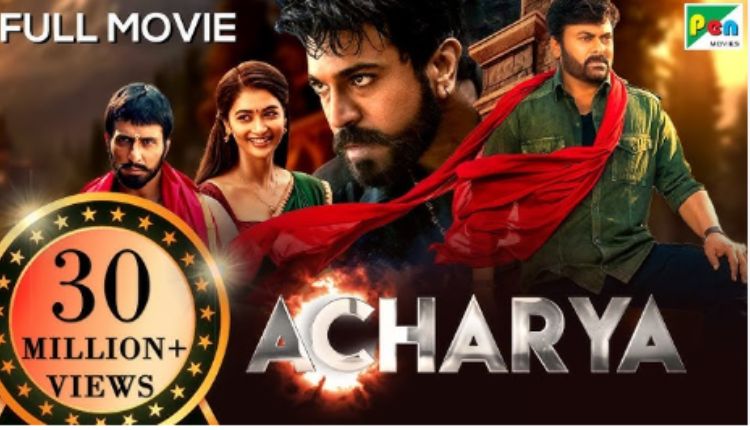This article examines the development of hindi movies, the formation of its popular genres, the function of stars and its increasing international reach. It also discusses the evolution of storytelling in Bollywood films over the decades and their impact on socio–cultural aspects.
STOMPING GROUND Hindi Movies
Hindi cinema dates back to 1913 with Dadasaheb Phalke’s silent film Raja Harishchandra. While it marked a significant moment in hindi movies, it wasn’t until the 1930s and 1940s that a distinctive cultural form of Hindi cinema started to emerge. Popularity of talkie films started to rise during this period, most notably by the first Hindi-language sound film, Alam Ara (1931).
Bollywood’s golden age hindi movies bloomed during the 1940s and 1950s, with films like Mughal-e-Azam (1960) and Mother India (1957) capturing the Indian imagination. These films paired grandiloquent storytelling with powerful thematic and social messages. The 1950s also saw the onset of playback singing in films and the establishment of immortal voices like Lata Mangeshkar, Kishore Kumar and Mukesh.
The 1970s and 1980s: The Age of Hindi Movies and Superstars
The 1970s saw a lot of change in hindi movies. Directors such as Manmohan Desai and Prakash Mehra pioneered the “masala” film genre, which blended action, drama, romance and comedy into one narrative. A new era in Hindi cinema was ushered in through the rise of the “angry young man” archetype, the most famous of whom was Amitabh Bachchan in a movie like Zanjeer (1973) or Sholay (1975). They were popular fare, touching on themes like social justice, corruption and poverty, which appealed to a rapidly changing society.
Well, the 1980s continued building on this formula, the over-the-top themes usually centering on family melodrama and extreme action sequences. It was also when hindi movies stars such as Amitabh Bachchan, Dharmendra and Hema Malini became larger-than-life presences, paving the way for the “superstar” culture of Bollywood that has persisted to this day.
1990s: Transition, Globalization Hindi Movies
The 1990s were a transitional phase for hindi movies. The opening up of the Indian economy in 1991 led to greater exposure to the international cinema industry, and walled Bollywood storytellers began to update their storytelling and production values. Movies like Dilwale Dulhania Le Jayenge (1995) and Hum Aapke Hain Koun..!! (1994), and Dil To Pagal Hai (1997) captivated audiences in and outside India.
There was also an increase in hindi movies diaspora cinema during this time, wherein Bollywood films catered to the increasing Indian expatriate population — in particular, in the US, the UK, and the Middle East. Directors such as Karan Johar and Aditya Chopra catered to the global audience with stories about family, love, and tradition. On the other there were also the advent of better technical features too, improved soundtracks, exotic filming locations and enhanced cinematography made for a more refined film-going experience.
2000s to 2010s: Rewriting the Story Hindi Movies
By the 2000s, Bollywood had taken its place as a global juggernaut. The internet and digital platforms made Hindi films accessible to wider, more diverse audiences. As the internet changed the way people consumed movies, hindi movies films like Kabhi Alvida Naa Kehna (2006) and My Name is Khan (2010) took on social issues like infidelity, racial discrimination and identity crises as topics, providing a more nuanced method of storytelling than ever before.
At the same time, Bollywood was entering an experimental phase: filmmakers were starting to push creative boundaries. Directors like Sanjay Leela Bhansali, Anurag Kashyap and Vishal Bhardwaj pushed bold and interesting stories, churning out films like Devdas (2002), Black Friday (2004) and Omkara (2006), which were completely unlike the the traditional Bollywood formula. These filmmakers explored darker, more complex themes and provided an alternative to mainstream masala cinema.
This also reflected in the new generation of actors like Ranbir Kapoor, Deepika Padukone and Priyanka Chopra coming to the forefront in the late 2000s and early 2010s, able to play more diverse and dynamic roles, moving away from the larger-than-life stars of the 1980s and 1990s to a more relatable and inclusive representation of characters.
Hindi Movies in the Now: Endless Stories and Representation
The past ten years have seen a transformation in Bollywood, in its storytelling, and in its characters. However, today hindi movies is as diverse, inclusive, and experimental in genres. Movies such as Queen (2013), Piku (2015), Zindagi Na Milegi Dobara (2011), and Article 15 (2019) have touched on the newer narratives by dealing with issues like female empowerment, mental health, as well as social justice. And while this trend has opened up the national conversation for more stories that may not seem to be national, regional films as content-driven works have also challenged the idea of formulaic blockbusters and regressive narratives.
In addition, the new generation of directors like Zoya Akhtar Vikramaditya Motwane and Rajkumar Hirani now have come to squarely represent a menagerie of a new socially aware more realistic style of filmmaking. Their hindi movies makes the bollywood a more complex and entertaining industry, because in their films, they tends to subvert certain values of society.
The emergence of digital platforms (Netflix, Amazon Prime Video, Disney+ Hotstar, etc.) has also changed Hindi cinema. It will be noted that, in recent years, in the face of the traditional theatrical release of films, while the web series and web films became more and more popular, filmmakers have sought a new path. This change has enabled more experimental stories and free from the strict molds of commercial film.
From Bombay to the World: The Global Reach and Influence of Hindi Movies
The evolution of hindi movies has seen significant changes over the years, and one of the most notable developments is its increasing international appeal. Bollywood has always had a sizable diaspora audience, but with films now widely available on digital platforms, it has reached a global audience like never before. Shah Rukh Khan, Aamir Khan, Priyanka Chopra, all international stars today, Hindi films are now also watched in countries as diverse as Japan, Russia, South Korea and Africa.
This influence is seen with Bollywood having ties with international filmmakers and actors. For example, films such as Slumdog Millionaire (2008), which was co-produced by Indian and Western filmmakers, not only helped to give Bollywood a platform on the world stage but also opened the doors for further collaborative works between Hollywood and Bollywood.
In addition, Indian music and dancing increasingly permeate global pop culture, with Bollywood soundtracks, choreography and fashion lines popularising trends throughout the world. From A.R. Rahman and the Bharatanatyam, Kathak and modern Bollywood dance forms of Indian music composers to the music styles hailed across the international pop culture.
More Words
The growth of hindi movies is unique and fascinating albeit a confusing thing to figure out when I look at my peers abroad who have had a vastly different pop cultural experience. Bollywood today stands at a crossroad where it is also trying to balance commercial entertainment with more meaningful, socially relevant narratives. There are few convincing answers because, while quite a bit has changed, the challenges of audience expectations, international competition and evolving technologies continue to propel Hindi cinema towards harsh new frontiers.
With Bollywood adopting diverse storytelling techniques and reaching wider audiences, it will undeniably remain a driving force in hindi movies shaping global entertainment and fostering cultural dialogue. All in all, the future looks promising for Hindi cinema, which in its evolution has always surprised and in the process inspired the international viewers over the years.



